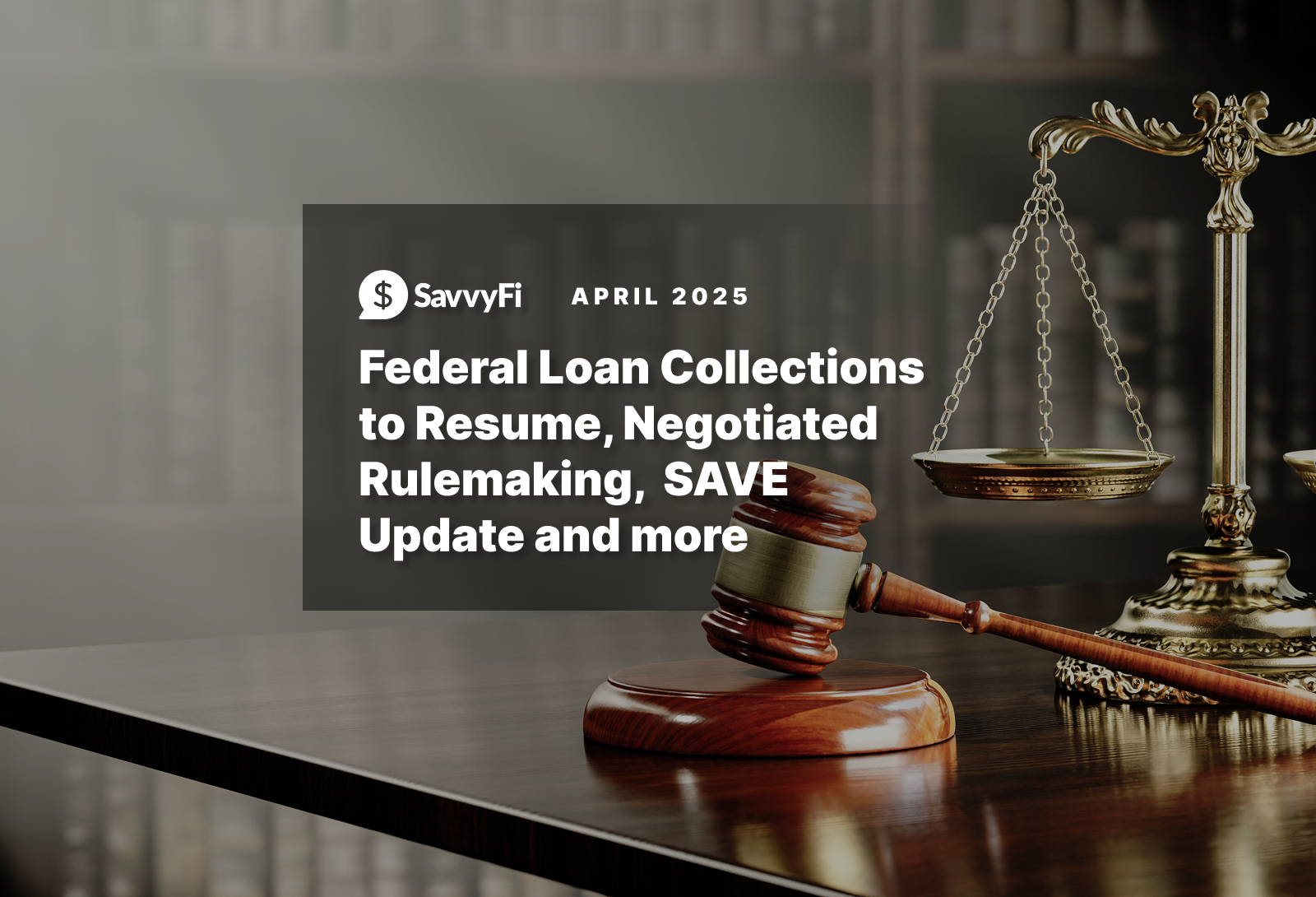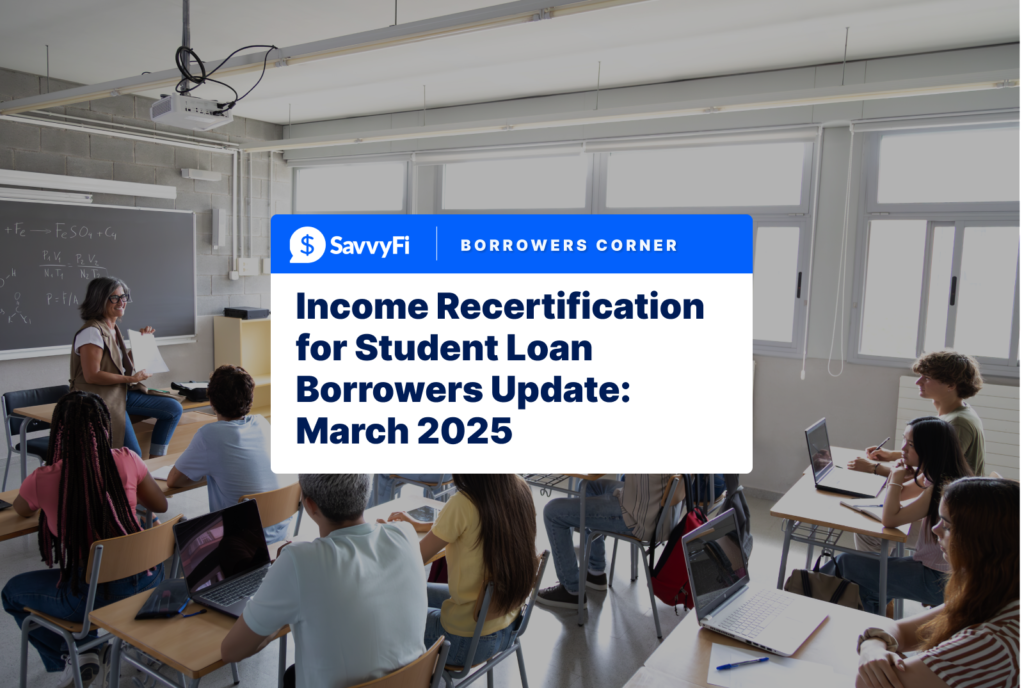What student loan borrowers need to know about headlines in April 2025. Brought to you by SavvyFi Consultant, Jason DiLorenzo.
Updated 5/1/2025 to reflect the latest legislation proposed in the U.S. House of Representatives on 4/28/2025.

Jason DiLorenzo
As an employer consultant and student loan borrower advocate, Jason has taught best practices at top U.S. schools and hospitals.
Organizations have managed over $5 billion in federal student debt since 2010, under Jason's leadership.
1️⃣ May 5th – Federal Student Loan Collections Resume
Here’s the reality employers should note:
🔹 1 in 4 borrowers—that’s nearly 10 million people—could soon be in default.
🔹 Over 5 million borrowers haven’t made a payment in the past year.
🔹 Just 38% are current on their loans (yes, barely a third).
🔹 Close to 2 million borrowers are stuck waiting for help, thanks to processing delays.
For employers, this isn’t just a borrower problem—it’s a payroll and productivity problem. Wage garnishments hit morale, cause HR headaches, and can easily be avoided with the right guidance and benefits.
2️⃣ SAVE Plan Update
A court decision on the SAVE plan is expected as early as next month. Borrowers currently in SAVE’s administrative forbearance may be allowed to stay in forbearance through early 2026—but keep in mind: those months don’t count toward PSLF. Once the ruling is final and applications reopen, most PSLF-eligible borrowers should plan to move into IBR or PAYE (depending on eligibility) to keep progress going.
3️⃣ The Spouse Income Confusion (and Resolution)
4️⃣ Open Now: A Rare Chance to Shape the Rules That Shape Your Repayment
- How future IDR plans are structured
- The tax treatment and availability of IDR-based loan forgiveness after 20-25 years of repayment
- The potential narrowing of the definition of public service for PSLF
5️⃣ New Bill Proposed in House
Added 5/1/2025: A new bill introduced in the House would overhaul the student loan system and it’s moving through budget reconciliation. A simple Senate majority vote would pass the proposal into law.
A few key changes on the table:
- The SAVE Plan would be eliminated, a change expected by many given ongoing legal challenges.
- Consolidation of all Income-Driven plans into a single plan offering forgiveness at 30 years (current IDRs are at 20-25 years). The new plan will be called Repayment Assistance Plan (RAP), and the monthly payments will resemble the current PAYE plan. Like SAVE, the plan likely being eliminated, the RAP is designed so that when monthly payments don’t cover accruing interest, there will be NO interest added, which is more generous than any of the available IDRs today.
- Federal loan limits by undergrad / advanced degree, and no more Grad PLUS or Parent PLUS loans.
- Closing the “residency loophole” for physicians… Residency years would no longer counts toward PSLF — If you’re a doctor and haven’t yet certified past employment, it’s critical to do so soon.
There’s time to prepare, and also to participate in the process. Any changes implemented wouldn’t take place until likely July, 2026… and yes, some grandfathering for existing borrowers may apply.
As stated above, Negotiated Rulemaking began this week. You can submit your comment here (look for the the green button: “Submit a Public Comment”).
Also, as mentioned above, the IDR application remains available on line, and servicers will begin processing them around May 10th. If you’re in the SAVE forbearance now, we’re finally at the point now where changing plans may make sense if you’re pursing PSLF.
How employers can help:
1. Provide Student Loan Repayment Benefits
Employers can use tax-efficient strategies to alleviate the burden of student loans.
- Section 127: Provides up to $5,250 annually in tax-free educational assistance.
Click here to read more about how SavvyFi can help you provide this benefit.
2. Offer Tools and Resources for Loan Management
Platforms like SavvyFi make it easy for employers to support their employees:
- Streamlined Administration: SavvyFi integrates directly with loan servicers, simplifying employer contributions and ensuring compliance.
- Education and Transparency: Employees can access clear, actionable information about repayment options, forgiveness programs, and tax benefits.
- Comprehensive Support: From automating PSLF certifications to tracking progress under IDR plans, SavvyFi empowers employees to navigate the complexities of student loans.
3. Educate Employees About Repayment Options
Provide workshops or webinars on:
- Avoiding default through rehabilitation and consolidation.
- Transitioning to new repayment plans if SAVE is discontinued.
- Making informed decisions about refinancing.
4. Integrate Financial Wellness Into Your Benefits Package
Pair student loan repayment assistance with other financial wellness programs, such as retirement planning, to create a comprehensive support system.
How SavvyFi Can Make a Difference
SavvyFi is more than a student loan management tool; it’s a bridge to financial wellness for both employees and employers. By partnering with SavvyFi, your organization can:
- Enhance Recruitment: Attract talent by showcasing loan repayment benefits as part of your compensation package.
- Boost Retention: Reduce turnover by easing financial stress for employees with significant student debt.
- Streamline Processes: Simplify the administration of complex programs like PSLF and IDR plans, saving time for HR teams.
2025 will be a challenging year for borrowers as they navigate the resumption of loan collections, legal uncertainties around repayment plans, and a potential increase in defaults. Employers have a unique opportunity to step in and provide meaningful support that can transform the financial and emotional well-being of their workforce.
About SavvyFi: SavvyFi is a user-friendly fintech platform that makes it easy for employers to provide college savings and student loan benefits to their employees. Because the company’s platform is “zero-touch” to HR — without any complicated systems, integrations, or paperwork — SavvyFi unlocks education financing capabilities to even the smallest employers that would not otherwise be able to offer these benefits.
Disclosure: Third-party quotes shown may not be representative of the experience of all SavvyFi customers and do not represent a guarantee of future performance or success.





